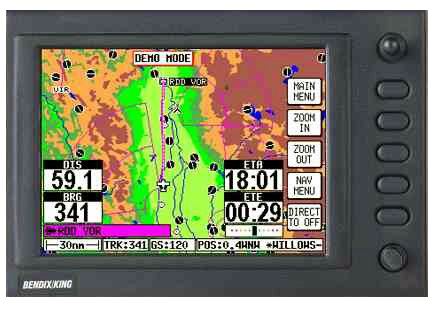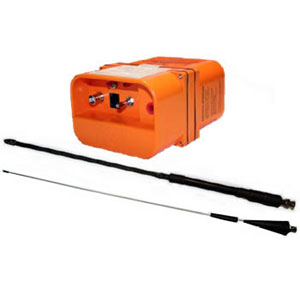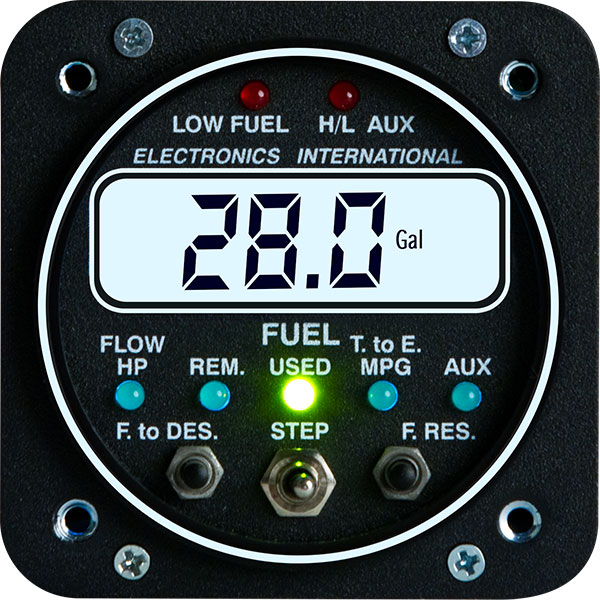 |
| Tapa de una revista italiana de 1943 con la imagen de mi padre antes de subir a su MC 202 |
En cuanto a mi, hice el curso de piloto en Miramar en 1986, en el PA11 LV-YOD, dos años después que falleciera papá (el no quería que yo fuera piloto). Tenia, antes de hacer la travesía, unas 400 hs de vuelo totales, incluyendo las de instrucción y de ultraliviano. Volé PA11, PA18, Aeronca Champion, C152, 172, 182 y Piper Warrior. Dejé de volar asiduamente cuando me casé con Betina en 1990. Hice el curso teórico de piloto comercial en el 2001, en Tandil. Estoy habilitado para VFR controlado y soy también piloto de planeador.
Comencé con la idea de la travesía en 2012, se la propuse a Betina y ella aceptó. Buscaba oportunidades de compra desde que vendí una pulverizadora terrestre que quedó en Uruguay luego de que quebrara la empresa de producción agrícola allá.
Al momento de comprar el avión en mayo de 2013, hacia 2 años que no volaba y me rehabilité volando el Citabria en Colorado. Renové el psicofisico el 31 de mayo de 2013 y solicite la validacion de mi licencia en USA en agosto de 2013 que me fue concedida en diciembre de ese mismo año.
Aeronca Champion 7 E LV-FRC
Este avión tiene algo especial para mi. Mi papà tenia 3 de estos. El que se ve en la foto (1965?) a la derecha (están los hermanos Lahitte y yo estoy parado sobre la rueda y apoyandome en el capot)
 |
| 1968 creo. ...tendria 7 años entonces... |
Bellanca 7 KCAB N88463
Este es el avion con el que haremos el viaje.
PANEL
Navegacion
El avion cuenta con un navegador Bendix/King Skymap IIIC que tiene una pantalla de 12.5x10 Cm

Ademas llevamos un GPS Garmin portatil.
Comunicaciones
Una radio VHF King KY197 A para comunicaciones con el servicio de transito aereo (ATC) y entre aeronaves.
Un transponder Narco AT 150
Un localizador de emergencia (ELT) que se activa manualmente o cuando recibe un impacto.

Combustible
Un indicador de Flujo de Combustible Electronics International FP-5L . Indica: flujo actual de combustible, combustible remanente , tiempo remanente, distancia remanente y alarmas.

Supervivencia:
Carpa, Bolsas de dormir, Espejo, fosforos, Encendedor, Linterna, 4 litros de agua, Botiquin de primeros auxilios, Pastillas potabilizadoras de agua, Localizador de Emergencia
Production history
The Citabria was designed and initially produced by Champion Aircraft Corporation, and was a derivative of designs the company had been building since acquiring the 7-series Champ fromAeronca in 1954. The model 7ECA Citabria entered production at Champion in 1964. The 7GCAA and 7GCBC variants, added in 1965, were joined by the 7KCAB in 1968.
In 1970, Champion was acquired by Bellanca Aircraft Corporation, which continued production of all of the Champion-designed variants. Bellanca introduced two designs with close connections to the Citabria: The 8KCAB Decathlon and the 8GCBC Scout. Production at Bellanca ended in 1980 and the company's assets were liquidated in 1982.
The Citabria designs passed through the hands of a number of companies through the 1980s, including a Champion Aircraft Company which was no relation to the Champion Aircraft of the 1960s. In that period, only one Citabria model was built—a 7GCBC marketed as "Citabria 150S." American Champion Aircraft Corporation acquired the Citabria, Decathlon, and Scout designs in 1989 and returned the 7ECA, 7GCAA, and 7GCBC models to production over a period of years.
[edit]Design
The Citabria traces its lineage back to the Champ. The most noticeable external changes to the design are the Citabria's squared-off rudder surface, wing tips, and rear windows. Like the Champ, the Citabria features tandem seating. The fuselage and tail surfaces are constructed of welded metal tubing. The outer shape of the fuselage is created by a combination of wooden formers andlongerons, covered with fabric. The cross-section of the metal fuselage truss is triangular, a design feature which can be traced all the way back to the earliest Aeronca C-2 design of the late 1920s.
The strut-braced wings of the Citabria are, like the fuselage and tail surfaces, fabric covered, utilizing aluminum ribs. Most Citabrias were built with wooden spars. American Champion has been using aluminum spars in the aircraft it has produced and has, as well, made the aluminum-spar wings available for retrofit installation on older aircraft.
The landing gear of the Citabria is in a conventional arrangement. The main gear legs of most Citabrias are made of spring steel, though American Champion began to use aluminum gear legs in 2004. Early Citabrias were fitted with steel tube main gear which use an oleo strut for shock absorption. All of the variants are discussed in more detail below.
[edit]Operational history
When the Citabria was introduced, it was the only airplane being commercially produced in the United States which was certified for aerobatics. Citabrias were also popular as trainers—because of their conventional gear and their aerobatic capabilities—and as personal aircraft. They were also found in utility roles such as bush flying—thanks to their short take off and landing ability, agriculture, pipeline patrol, and as glider tow planes. Though variants of the design, and other better-suited designs, have largely taken over the Citabria's utility roles, Citabrias remain popular as trainers, glider tow planes, and for personal use.
[edit]Variants
[edit]7ECA, Citabria Standard, Citabria Aurora
Introduced in 1964, the 7ECA was the first version of the design and utilized the Continental O-200-A engine of 100 horsepower (75 kW). When introduced, it featured wood-spar wings and oleo-shock main gear. Within the first year of production, Champion began offering the Lycoming O-235-C1engine of 115 horsepower (86 kW) as an alternative to the Continental. In 1967, Champion switched to spring steel main gear legs; by then, the Lycoming engine had become the standard. On acquiring the design, Bellanca gave this model the name Citabria "Standard" and began using the 115 horsepower (86 kW) Lycoming O-235-K2C engine. When American Champion reintroduced the 7ECA in 1995 as the Citabria "Aurora, " the biggest change was the use of metal-spar wings; the most recent significant design change has been the switch to aluminum main gear legs in 2004.
[edit]7GCAA, Citabria 150, Citabria "A" Package, Citabria Adventure
Introduced in 1965, the Champion 7GCAA, like the 7ECA, featured wood-spar wings and oleo-shock main gear. The major difference was in the engine, which in the 7GCAA was a Lycoming O-320-A2B of 150 horsepower (110 kW). Champion switched to spring steel main gear legs in 1967. Bellanca continued production of the 7GCAA as the Citabria "A" Package (a designation apparently begun by Champion), but with no significant design changes. American Champion's 7GCAA, reintroduced in 1997 as the Citabria "Adventure," is similar to earlier versions, with the exception of the metal-spar wings and the use of the Lycoming O-320-B2B engine of 160 horsepower (120 kW); the most recent significant design change has been the switch to aluminum main gear legs in 2004. An "Ultimate Adventure" version, with a Superior Vantage O-360-A3A2 engine of 180 horsepower (130 kW) and a composite propeller, is also produced by American Champion.
[edit]7GCBC, Citabria 150s, Citabria "C" Package, Citabria Explorer
Champion introduced the 7GCBC in 1965. It was substantially similar to the 7GCAA of the same year, with a Lycoming O-320-A2B engine of 150 horsepower (110 kW), wood-spar wings, and spring steel main gear legs. The major differences between these two models are that the 7GCBC has a wingspan of 34.5 feet (10.5 m), 1-foot (0.30 m) longer than the 7ECA and 7GCAA, and carries wing flaps. Bellanca continued production of the 7GCBC, calling it the Citabria "C" Package (a designation apparently begun by Champion). American Champion's 7GCBC, reintroduced in 1994 as the Citabria "Explorer," is similar to earlier versions, with the exception of the metal-spar wings and the use of the Lycoming O-320-B2B of 160 horsepower (120 kW); the most recent significant design change has been the switch to aluminum main gear legs in 2004. A "High Country Explorer" version, with a Superior Vantage O-360-A3A2 engine of 180 horsepower (130 kW) and larger wheels, is also produced by American Champion.
[edit]7KCAB, Citabria "B" Package
Champion introduced the 7KCAB in 1968. It was substantially similar to the 7GCAA of the same year, with wood-spar wings and spring steel main gear legs. The major differences between the7GCAA and 7KCAB were in the fuel system and the engine oil system. The engine was replaced with a Lycoming IO-320-E2A of 150 horsepower (110 kW), while a header tank of 1.5 gallons—located beneath the instrument panel—was added to the fuel system. In addition, the carburetor was replaced with a fuel injection system, and a Christen Industries inverted oil system was fitted to the engine. All of these changes were made in order to allow for extended inverted flight, a mode not possible in the earlier models. Bellanca continued production of the 7KCAB as the Citabria "B" Package (a designation apparently begun by Champion).
[edit]Citabria Pro
The Citabria Pro was tested by Champion in 1968, but was never put into production at Champion nor by Bellanca which acquired the company and designs only a short time later. The Citabria Pro was based on the 7KCAB, but with a vertically shortened fuselage, a wing of semi-symmetric airfoil mounted in a parasol configuration, and a unique engine, the Lycoming IO-360SPL. While it was flown as a single-seat, there was a second set of controls and room for a second seat. The design changes were intended to produce an aircraft capable of more complex maneuvers and better performance in inverted flight. Sources conflict over whether the Citabria Pro was assigned model number 8KCAB or 9KCAB. Since the 8KCAB designation ultimately belonged to theDecathlon design, which was in development at Champion at the same time, it is unlikely that it was used for the Citabria Pro.











Probando comentario...
ResponderEliminarEste comentario ha sido eliminado por el autor.
ResponderEliminargrandeeees! Lomejor para ustedes!
ResponderEliminarHermosa historia!!
ResponderEliminar